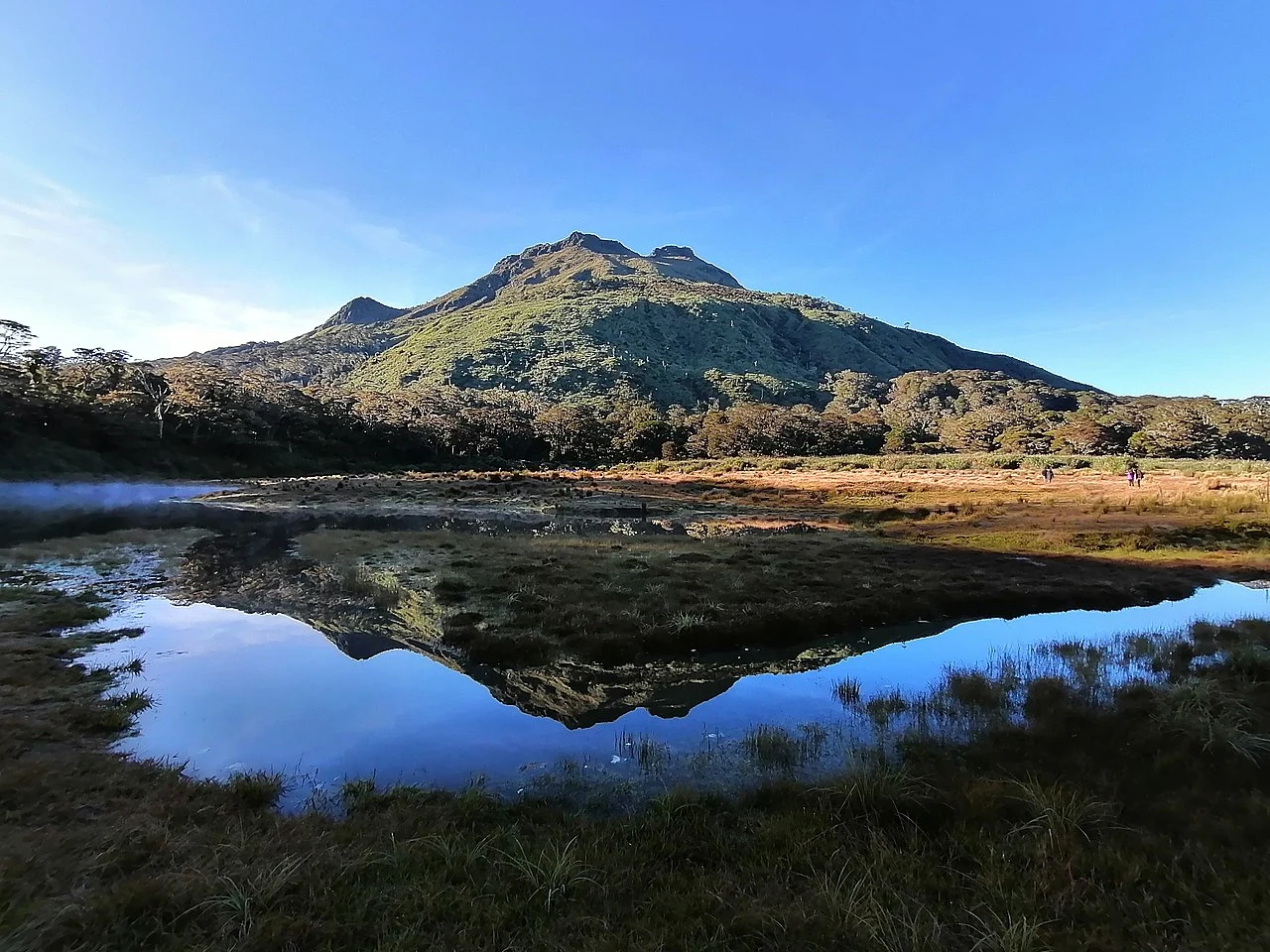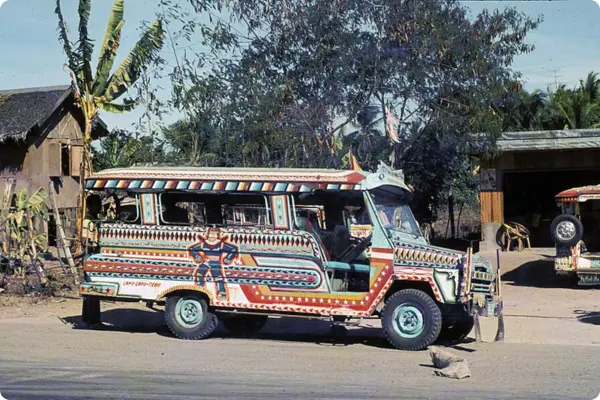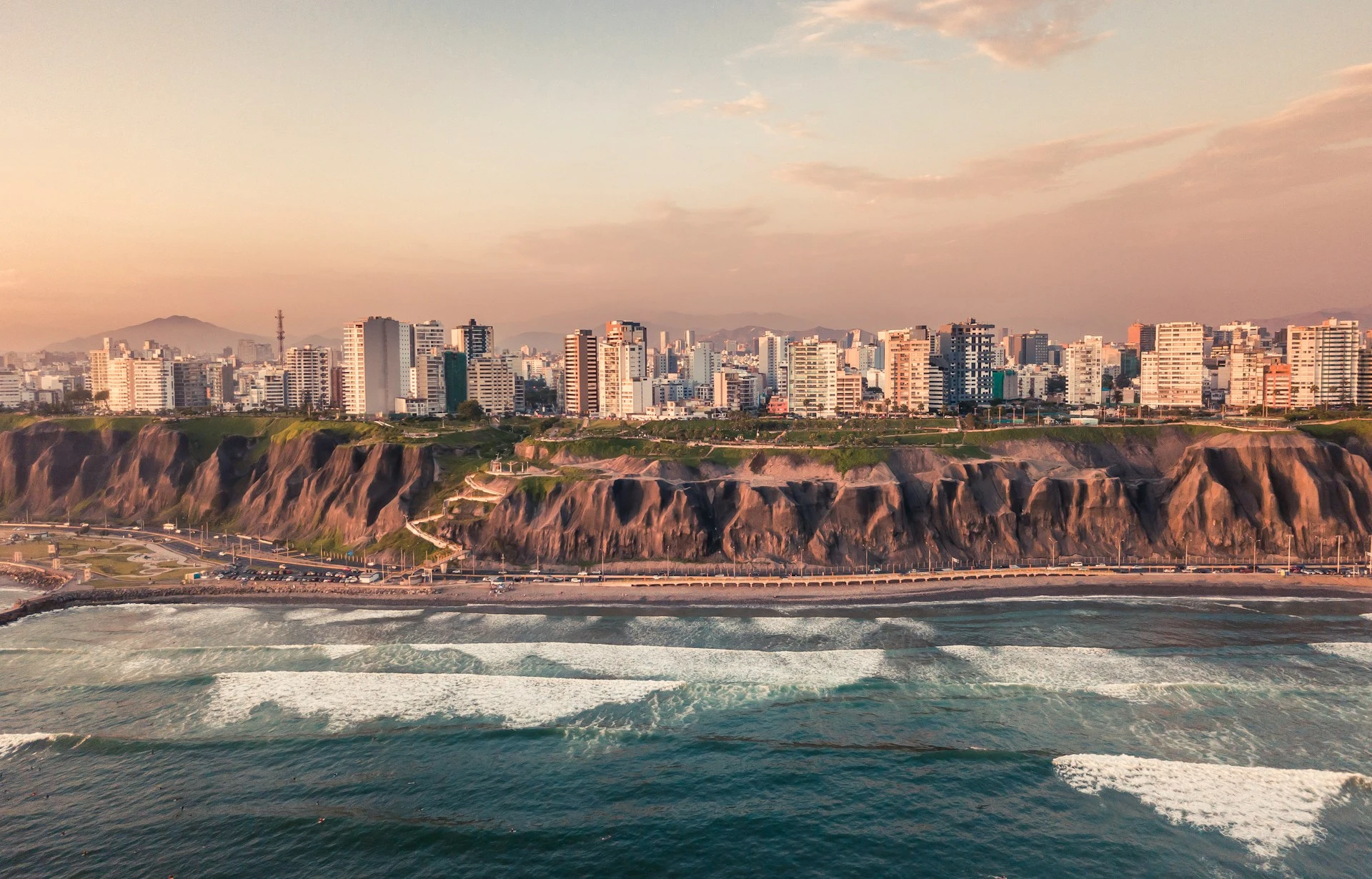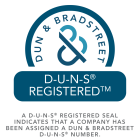The Philippines is a beautiful country. Wherever you land, you really can’t go wrong. From good food and kind locals to a plethora of traditions and cultures, the Filipino nation has it all. Nevertheless, if you’re going to travel through this majestic nation, this Philippines travel guide contains everything you need to know.
Once you’ve stepped foot in the Philippines, you’re sure to find yourself overwhelmed with kilig, a feeling of exhilaration. To simplify things, I’ve chosen one tips for (almost) every letter in the English alphabet.
Before we go any further, I must warn you that there was not a single thing I could come up with for “X” and “Y.” So if you think of one, let us know in the comments!
Let’s get started!
A is for Ayala Museum
The Ayala Museum is 50 years old. It’s a museum of Filipino history and iconography. Its sixth floor is home to the Filipinas Heritage Library. It is open every Tuesday to Sunday from 10 a.m. to 6 p.m.
Tickets are PHP 650 a piece (about $12 USD). You can book here, which is preferred to make sure there is room for you to enter the museum at a certain time slot. There is no eating, drinking, smoking or making loud noises in the building itself.
Bags or items larger than 11” by 14” are not allowed inside the galleries. There are a few ways you can access the museum:
- Taxi: Have your driver drop you off at Ayala Museum at the corner where Makati Avenue meets De la Rosa Street.
- Private vehicle: Paid parking is available in Greenbelt.
- Public transportation: If you take the Metro Rail Transit and get off at Ayala Station, it is a 15 minute walk from there. You can also take the bus to Makati CBD and get off at the Ayala Avenue bus station, which is a 10 minute walk to the museum from there.
B is for Batok Tattoos
The name Apo Whang-od may ring a bell to you. She is the oldest person to ever be put on the cover of Vogue magazine—and for good reason! She is 107 now (holy cow!) and still lives in Buscayan, Kalinga.
She does the batok tattoos there. She’s been teaching her grandnieces the art to keep it going when she passes one day. Visitors/tourists can receive “invented tattoos” or emben a whatok. These tattoos use only parts of traditional tattoos to keep the social meanings sacred for the Kalinga tribes.
Batok means “to hit” or “to strike,” which relates to the method used to ink one’s body with the needle (hand-tapping or hand-poking).
A gisi (a stick with a thorn) is made, and steel needles are attached to the tip. Then the pat-ik (light, wooden stick) is tapped repeatedly, about 90 to 120 taps per minute! The black ink they use comes from the soot of a clay or aluminum pot.
There are tons of social meanings for the tattoos in Kalinga, especially for the Butbut tribe. For example, chest tattoos on men denote bravery or badges of honor, and married or pregnant women can get x marks on their foreheads, cheeks, and noses to protect against bad spirits.
If you want a quick peek at the batok experience, check out this video.
C is for Cebuano Food
No Philippines travel guide is completed without the mention of Cebuano food.
There are tons of things you should try while in the Philippines, but most of all is the food. Filipino food is an acquired taste, however it’s worth trying! Cebu is known for a lot of dishes, so let’s look at some of them.
Cebu Lechon, or suckling pig, is said to be the best in all of the Philippines. There is also balbacua and linarang, both of which are stews. Balbacua is a beef stew usually with rice or noodles. They use the parts of the beef that are rich in collagen.
Linarang, on the other hand, is a sour and spicy fish stew with a coconut milk broth, vegetables, beans, and sour fruits. Then we have fried bakasi, or fried eel, and ngohiong, which is a combination of a spring roll and lumpia.
Also in the savory category is sinilihan, pork cubes cooked in coconut milk and chili peppers.
For you sweet tooths, you’ll want to look out for pintos, which are sweetcorn tamales wrapped in a corn husk. Another famous dessert is puto balanghoy, a steamed cassava cake with coconut and brown sugar.
People say that just one is enough to fill you up because they’re so rich! There are also two desserts involving rice balls. The first is masi, which is just a rice ball with a peanut butter filling. The second is ginataang bilo-bilo.
These are sticky rice balls in coconut milk with plantain bananas, sweet potatoes, and tapioca pearls. Yummy!
D is for Damili Pottery
Damili is the Ilocano term for molding. This is a major tradition in Vigan, especially in Bulala. All family members join in the process of creating the masterpieces. From gathering materials and molding to firing and storing, each member pitches in to get the job done working with the Bantog clay.
The Marcos family, the head of the country from the 60s to the 80s, used damili construction materials in buildings around Vigan. Damili craftsmen worked hard on red-clay tiles for the rich to cover their houses.
E is for (Cape) Engaño Lighthouse
A historic lighthouse in Palaui Island of Santa Ana, Cagayan, the Cape Engaño Lighthouse is an example of Spanish architecture. At the top, you can get a clear view of the Dos Hermanas Island nearby.
This lighthouse was one of four built during the Spanish Colonial period, and most workers who built it were Filipinos. Interestingly enough, they used volcanic rocks to build it! The Spanish named it “Engaño” (the word for “to entice or attract”) because they were amazed by the island’s natural beauty.
There is no entrance fee to access the lighthouse. However, there is an environmental fee of PHP 50 for Palaui Island, which is under $1 USD. It’s slippery during the rainy season, so visit during the dry season, November to May. Avoid going at noon because the midday sun is very hot.
F is for Forts San Pedro and Santiago
Fort San Pedro is located in Cebu City and is the oldest and smallest fort in all of the Philippines. The museum inside the fort has preserved Spanish artifacts. People even have weddings and other special occasions on the fort’s lawn! It is open from 8 a.m. to 7 p.m. and has a small entrance fee.
As for Fort Santiago, it is one of the oldest in Manila. It was the headquarters of the armies of foreign powers in Philippine history, including the Spanish, the British, the Americans, and the Japanese.
It is currently a National Shrine, National Monument, and National Cultural Treasure. Fort Santiago is open from 8 a.m. to 11 p.m. The entrance fee is 75 PHP for adults and 50 PHP for children, students, faculty, senior citizens, and PWDs.
G is for “Gatorade Factory”
A three-hour ride from Cebu City, the Kawasan Falls in Badian, Cebu are worth the lengthy trip. Nicknamed “Gatorade Factory” by the locals due to its blue color, the Kawasan Falls are in the mountains of Barangay Matutinao.
There are three waterfalls in total. Each one is a 15 minute walk uphill from each other with souvenir shops along the way. The first is always the most crowded because it’s the biggest. The Kawasan Falls are a perfect place for families and large gatherings.
Let’s look at some important tips on visiting the falls:
- Bring your own food! The resort’s restaurants are pricey.
- There are cottages and tables to rent. Cottages range from 1500 to 2500 PHP ( about $30 to $45 USD). Tables are rented for 500 PHP (roughly $9 USD). There are rooms available for overnight stays.
- You can rent a raft for 300 PHP (a little over $5 USD) to take you under the waterfall and around the “pool.” Life vests are also available to rent.
- The pathway is not lit. So if you plan to spend the day, bring a flashlight for the walk back!
H is for Hilot
Hilot is Tagalog for massage, or a touch with soothing strokes. It’s all about energy manipulation and is a remedy under the umbrella of non-invasive traditional healing methods. Hilot harnesses biochemical energies to create balance, harmony, health, and wellness.
The Hilot master, manghihilot, assesses the energy imbalance through things like hot and cold analysis, pulse reading, stool/sweat/urine analysis, or phrenology. Very rarely do the manghihilot teach this art to the general public because it is one of the most secret arts in the Philippines.
People learn from relatives, doing hands-on practice, and/or inheriting it from their forefathers.
For those who believe in the healing powers of hilot, man is considered healthy or “at-ease” if his mind, emotion, and body are in harmony with the Universal Law.
This sets up the balance of the precise combinations of the Elements within one’s body (i.e. earth, water, fire, and air). This combination varies from person-to-person based on their genes. An imbalance is called “dis-ease.”
I is for Inuman
The drinking culture of the Philippines, inuman is a way for people to come together and well…drink!
When drinking in groups, people share a common glass and pass it around in a sequence. The tanggero, or the person who starts it off, leads and pours every time it gets back to them, measuring purely by the eye. (Beware the friends who are heavy pourers!)
It’s frowned upon to take a pass. So if you are already too buzzed, someone from the group has to drink the shot for you! Inuman is usually accompanied by karaoke.
Another tradition Philippines have involving drinking is alay sa demonyo, or “offering to the devil.” Similar to vaska in Sweden, the tanggero pours a few drops of liquor into the cap when it is first opened.
From there, they toss it to the ground to “appease the spirits.” The legal drinking age is 18 years old in the Philippines, and it is considered an insult to reject an invitation for a shot or two by a local.
J is for Jeepney Rides
Jeepneys are for the most adventurous travelers. If you’re looking for a way to get around that is out of the ordinary and crazy cheap, then taking a jeepney is for you.
One of the country’s main modes of public transportation, jeepneys can be a bit intimidating if you don’t know what to do. Luckily, this Philippines travel guide has some useful tips for you!
- Know your route ahead of time (i.e. starting and stopping points, area names, names of the stops, etc.) If you have a guide with you, especially one from ALLMYNE, they can help you navigate, too! Your guide can tell you which jeep or jeeps to take along the way.
- Some jeepneys have “barkers” who call out the vehicle’s routes and destinations.
- Jeepneys are packed in tight, so expect a crammed ride, especially if it’s during rush hour.
- It is common courtesy to pass payments and change down the aisle to and from the driver and passengers.
- Make the driver’s life easier by making exact payments!
- Prior to your stop if there isn’t a string to pull, call out “Paro po,” which means “please stop.”
K is for Kawa Hot Baths in Tibao
Kawa means cauldron, so it’s no wonder that the Kawa hot baths in Antique are old cauldrons from factories.
These cauldrons were previously used to ground unrefined brown sugar! Kawa hot baths have many healing properties like soothing body aches, improving circulation, and destressing.
It’s also isolated from cities or towns, so it’s a great place to relax. There are different types of Kawa baths like coffee, milk, and wine baths.
L is for Land of the Dreamweavers
T’nalak is a traditional hand-woven cloth indigenous to the T’boli people from Cotabato. It celebrates and pays tribute to major life events within the community.
Woven from abaca fibers and dyed naturally, the cloth is dipped in dyes similar to a tie-dye process. The cloths can also convey class and individual status (specifically signifying warriors of the community).
T’nalak weavers were referred to as “dream weavers” because it was believed that the designs and patterns they made were from images in their dreams brought to them by the spirit of the abaca, Fu Dalu.
M is for Motag Living Museum in Aklan
The first living museum in the Philippines, the Motag Living Museum is an informative and interactive insight into the Philippines prior to colonization and Independence.
Created to keep local heritage and traditions alive, it reintroduces the teachings of Filipino ancestors to younger generations. Because it is all outdoor, this Philippines travel guide recommends bringing sunblock, bug spray and wearing comfortable walking shoes.
Also, booking during dry months is the smartest way to go. The morning tour is from 10 a.m. to noon, and the afternoon tour is from 2 p.m. to 4 p.m. Adult tickets are PHP 850 (~$15 USD), and kids under 12 get in for PHP 425 (~$8 USD).
N is for the National Museum of the Philippines Complex in Rizal Park
The National Museum of the Philippines Complex is made up of four major museums. We will explore each in depth below.
National Museum of Fine Arts
The National Museum of Fine Arts has 29 galleries and hallways of exhibitions of 19th century Filipino artists along with other leading artists around the nation.
Supposed to be a National Library, the place became the Old Legislative Building. In 2010, the museum was declared a National Historical Landmark.
To honor its value, the Philippine Flag in front of the building is to be permanently hoisted and lighted at night.
National Museum of Anthropology
Formerly the Finance Building before its destruction in the Battle of Manila, the National Museum of Anthropology was rebuilt in 1949 and has ethnographic, terrestrial, and underwater archeological collections from the past of the Philippines.
National Museum of Natural History
Originally the Agriculture and Commerce Building from the 1940s, the National Museum of Natural History’s core is a “Tree of Life” structure connecting all of the Filipino ecosystems.
In the old Department of Tourism building are botanical, zoological, and geological specimens. This museum has twelve permanent galleries of the biological and geological diversity in the Philippines.
National Planetarium
Unfortunately at the time of this posting, the National Planetarium is currently temporarily closed. However, it’s still something you should add to your bucket list.
The museum, established in 1975, has full-dome digital and mobile planetarium shows, lectures, demonstrations, and celestial observations.
Their gallery called “Filipino Life Guided by Stars” focuses on modern astronomy and ethnoastronomy practices from Filipino culture. The ethnoastronomy exhibition is broken into six sections:
- The Cosmic Timeline,
- Cultural Astronomy,
- Philippine Night Sky,
- Time Reckoning,
- Farming and Hunting, and
- Seafaring and Navigation
O is for Occidental Mindoro of Batangas in Luzon
Occidental Mindoro is a municipality in the Philippines known for its mountain ranges and paddy fields. It is actually a part of the two pieces of Mindoro (Occidental and Oriental) that were split up from an act created in 1950.
Pre-Philippines residents were known to have traded with merchants from other parts of the archipelago and Southeast Asia. The Spanish named it Mina de Oro (“mine of gold”) because of precious metals they’d found there.
Some theorize that the original Mangyans migrated from Indonesia before the year 775. They do not have a warrior society and are deemed extremely peaceful people who grow root crops and hunt for their meat.
P is for (Mount) Pinatubo
Mount Pinatubo is one of the most exhilarating stops in our Philippines travel guide.
This volcano in Luzon wasn’t really on anyone’s radar until its catastrophic eruption in 1991. It has had nine confirmed eruptions throughout its lifetime, dating back to the first in the year 7460 BCE with the most recent being in November of 2021.
People still say that it is one of the best volcanoes to hike despite its active status because of one thing: the aquamarine-colored lake in the volcano’s crater!
Q is for QUINTA Market
QUINTA Market was Manila’s central market for the wealthy of Quiapo. It now provides things for residents of all social classes.
Built in 1851 by Spanish government, it’s believed that the beloved dessert halo-halo originated here in the 1920s/30s. It is open to the public daily and has low prices with shops selling wood products, furniture, and handicrafts, as well as tourist souvenirs.
R is for Rice Terraces of the Philippine Cordilleras
No way were we going to go one destination without highlighting its features on the UNESCO World Heritage List.
I mean, it’s on the list for a reason! Following the contours of the mountains, UNESCO calls it an “outstanding example of an evolved, living cultural landscape.” Located in Luzon over four municipalities, it is made up of five clusters:
- The cluster in Kiangan
- The Hungduan cluster that looks like a spider web
- The central cluster with traditional farmers’ houses and granaries interspersed throughout it
- The cluster in Banaue near a traditional Ifugao village
- The cluster also located in Banaue that is arranged in an amphitheater-esque semi-circle with a village at its based.
It is said to have been built over 2,000 years ago!
S is for Sinulog Festival in Cebu
The Sinulog Festival is just one of thousands celebrated in the Philippines. This festival honors Santa Niño de Cebú, a statue of the baby Jesus given to Rajah Humabon of Cebu by the Portuguese explorer Ferdinand Magellan in 1521.
This paved the way for the birth of Christianity in the Philippines. It is said that Queen Juana, the main companion of Humabon, did a dance while holding the statue, and this is meant to have been the first Sinulog dance.
Sinulog comes from the Cebuano word sulog, meaning movement like a water current. This refers to the back and forth motion of the dance steps. The festival is held every third Sunday of January in Cebu City.
The main event, the Grand Street Parade, starts around 8 or 9 in the morning. At night, there are pyromusical shows to enjoy!
T is for Tau Temwel
Tau temwel is the T’boli art of brass casting and jewelry making. Modern day tau temwel uses brass and other metal scraps found in local junk shops.
Each piece pays homage to T’boli traditions, folklore, and spiritual connection to nature. The complex process of wax rolling, clay molding, and molten metal casting is truly something to behold.
The T’boli people are also known for their aforementioned t’nalak weaving!
U is for Underground River of Puerto Princesa
Our second UNESCO feature in the Philippines, the Puerto-Princesa Subterranean River National Park has a limestone karst landscape with an underground river. The park is heavily involved in biodiversity conservation.
The underground river emerges into the sea, and its cavern has many rock formations. There are two floors, resulting in waterfalls inside the cave! There is also a cave of bats on the second floor.
The national park is the first devolved and successfully managed by a local government and has eight of the thirteen types of forests in it.
V is for Visita Iglesia
A panata (sacred vow) Filipino Catholics make, Visita Iglesia is the pilgrimage of visiting at least seven different churches on Maundy Thursday (Holy Thursday) and Good Friday. It comes from a 16th century Roman tradition led by Saint Philip Neri.
Originally, Romans went to the seven major basilicas. The tradition became popular in the Philippines during the Spanish colonial period. Some people walk barefoot from church to church, while others carry crosses.
All are in an attempt to share in the sufferings of Christ on his way to be crucified. The number seven is in reference to the Seven Last Words of Jesus or the Seven Holy Wounds of Jesus. Some areas visit fourteen churches for the fourteen Stations of the Cross.
Most make a small gift for the poor at each church they visit.
W is for White Beach
White Beach is Boracay Island’s main attraction, so it’s earned itself a mention in our Philippines travel guide. The weather on the island is beautiful nearly year round, so it’s safe to schedule a visit whenever you’re in town!
The hottest months are March to June, and the wettest months are from August to October. Quick tip: you MUST have a printed voucher from a resort or hotel in Boracay to get onto the island.
White Beach is the best location for things like
- Sunrise and sunset viewing
- Stand-up paddleboarding
- Kite surfing
- Snorkeling
- Scuba diving
- Banana boating
- Helmet diving
- Fly fishing, and
- Parasailing
Drinking is only allowed in the bars and is strictly forbidden on the beach. Smoking is also not allowed on the island whatsoever.
Z is for Zamboanga and the Hermosa Festival
Our final stop in our Philippines travel guide alphabet is Zamboanga’s Hermosa Festival.
Also known as the Fiesta Pilar, it honors the city’s patron saint Nuestra Señora de la Virgen del Pilar (Our Lady of the Pillar) who has a shrine in Fort Pilar.
Z amboangueños believe she performed miracles. The feast day is on the 12th of October, but the festivities go for the entirety of the month of October.
Events include a pageant, the famous Regatta, fashion shows, fairs, and dance competitions.
Now You Know Your ABCs of the Philippines…
Your tadhana shows that the Philippines is one of the next stops in your travels around the world. And what better way to get there than with ALLMYNE.
ALLMYNE makes it easy to travel by connecting you with a local guide, collecting all your memories, and creating a personalized itinerary.
You can’t go wrong when you plan an unforgettable trip with ALLMYNE, and the Philippines just might be at the top of your list now!
Download the ALLMYNE app from the APPLE STORE or GOOGLE PLAY to seamlessly plan, capture, and share your travel journey with a global community of fellow explorers. Upgrade to our PRO subscriber level for even more perks, including audio recording in your journal, AI-powered location suggestions tailored to your interests, unlimited trip locations, and unlimited storage for all your travel memories.
Download the ALLMYNE app now – the ultimate travel companion to enhance every step of your journey!















